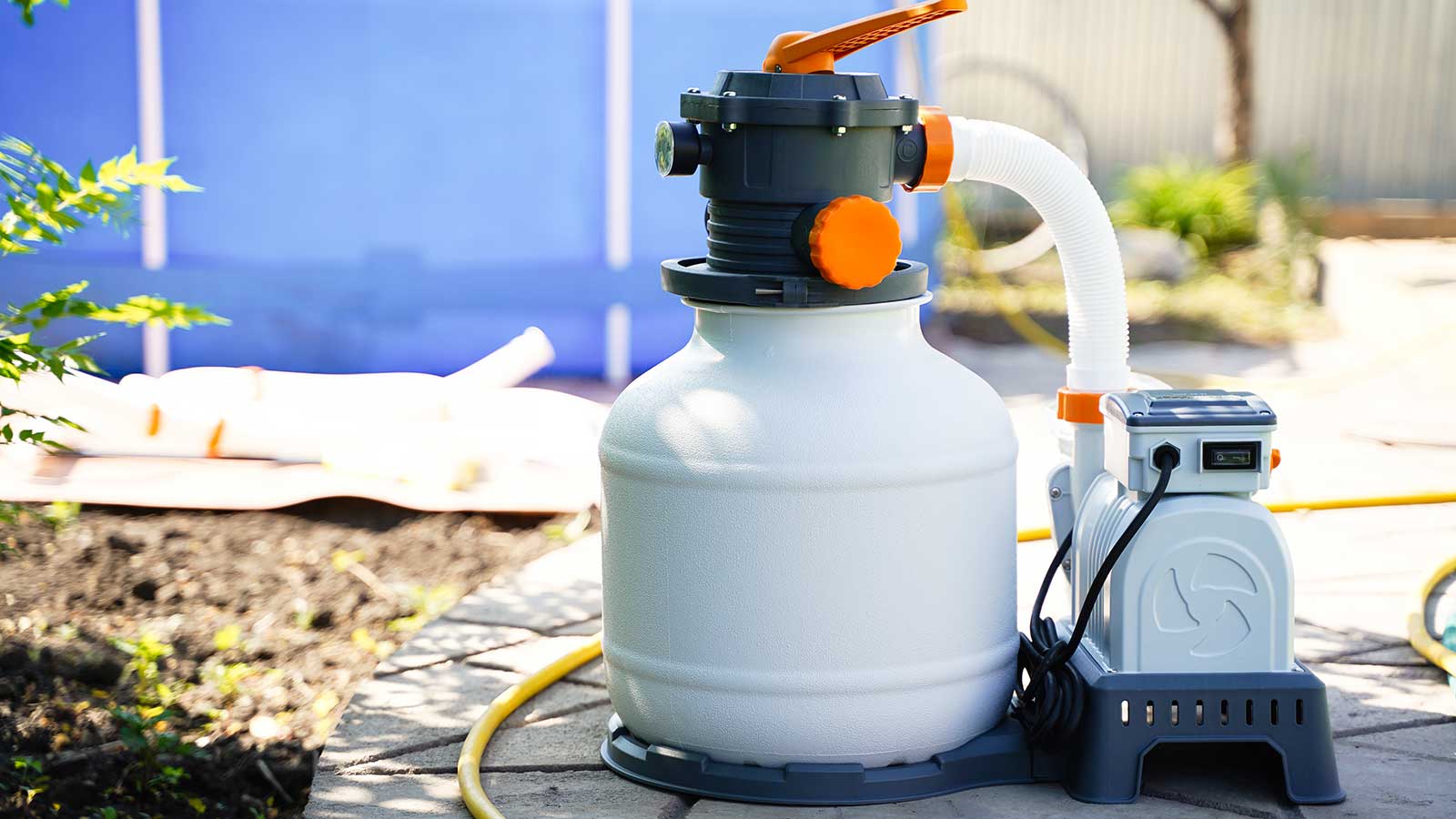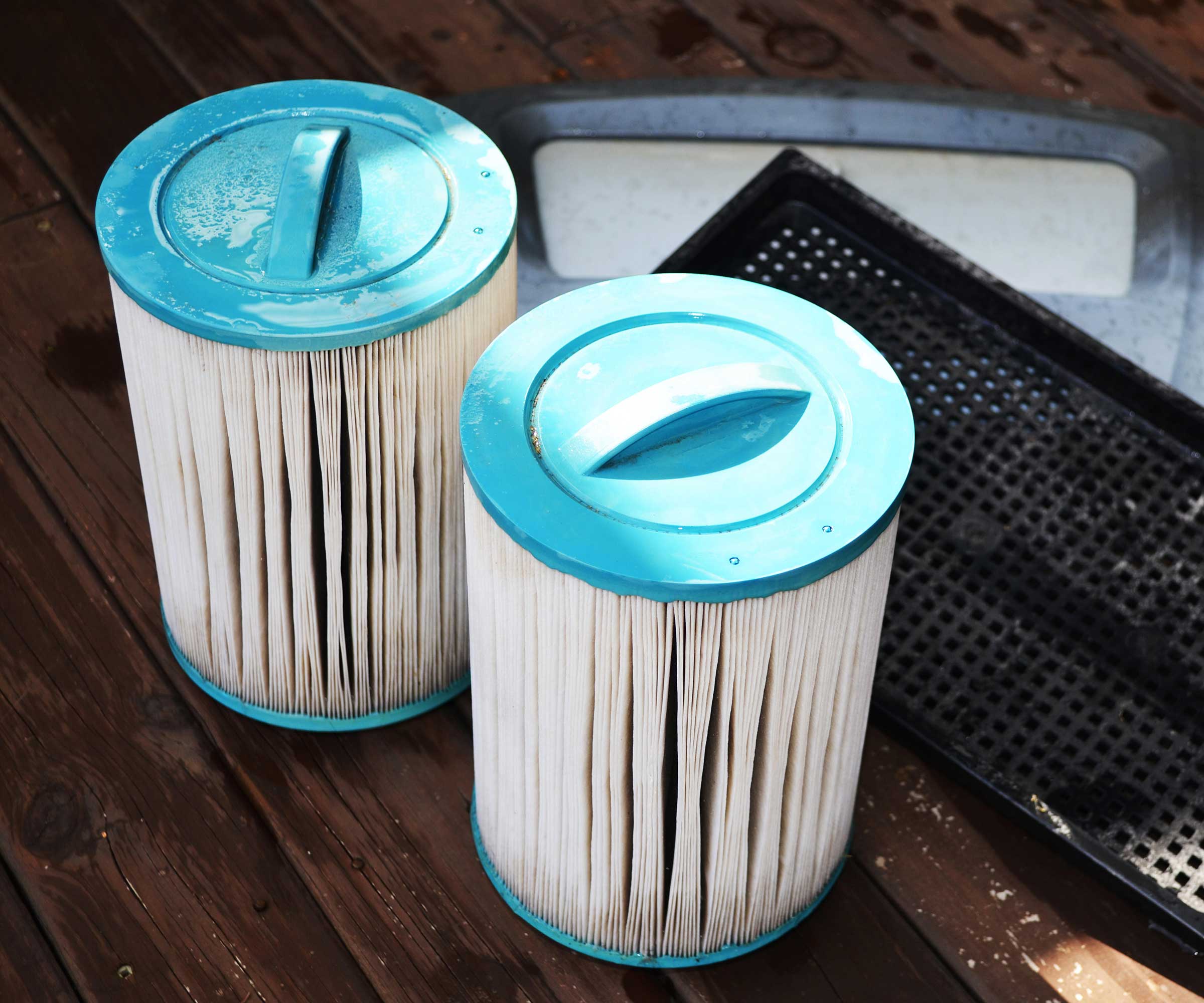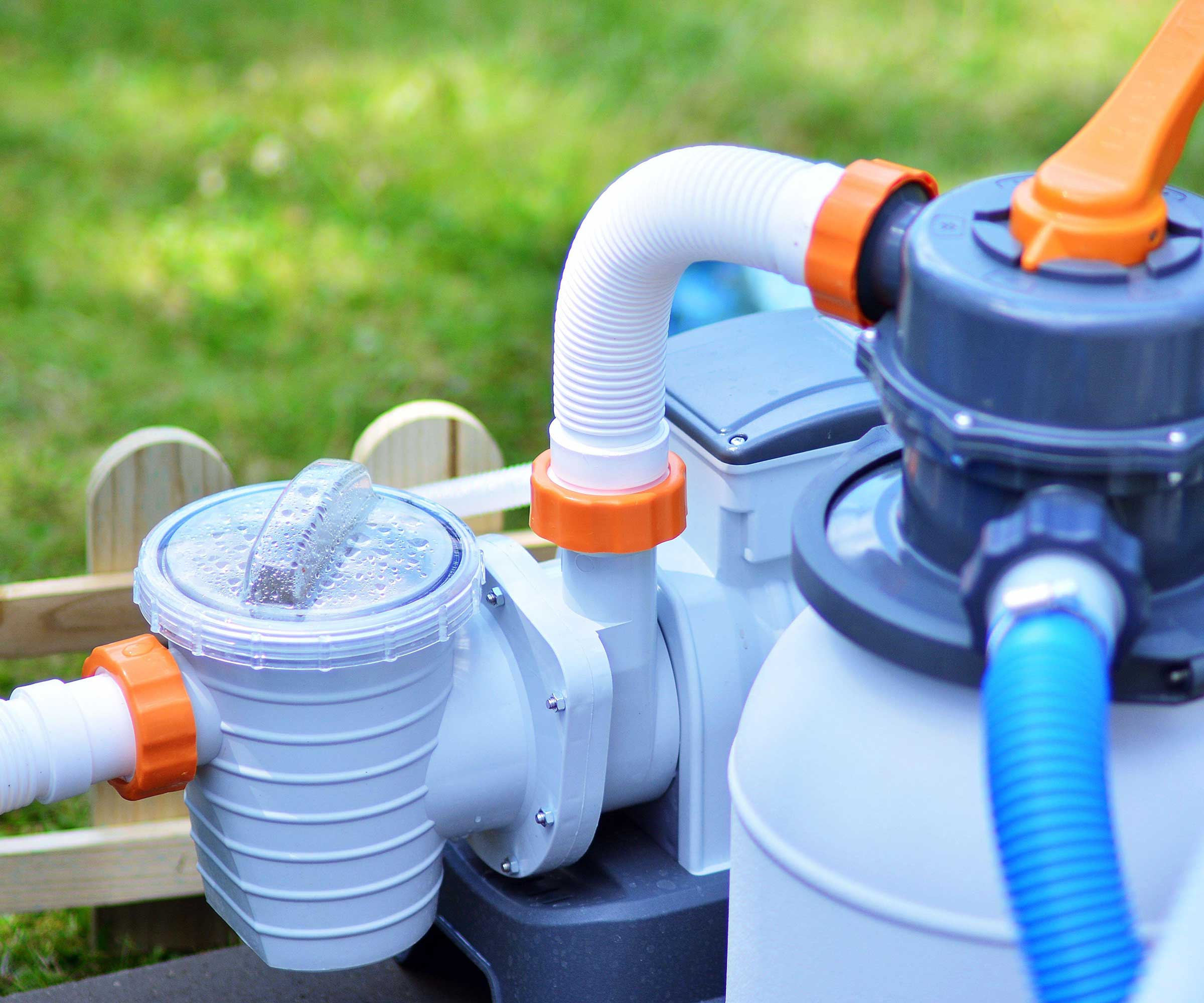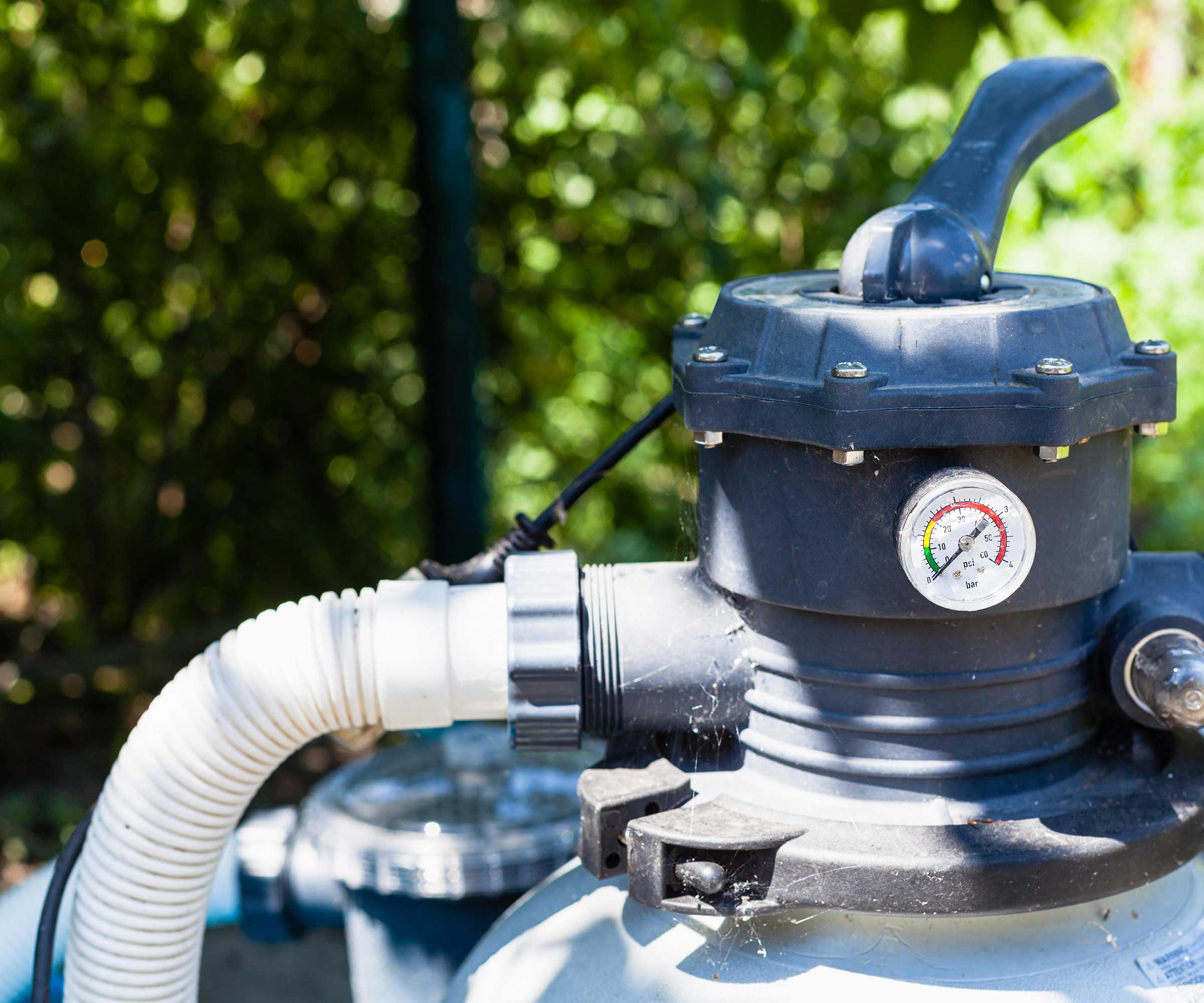How to clean a pool filter – top tips for cartridge, sand, and diatomaceous earth designs
Keep your pool filter functioning properly with these expert guidelines


There are three types of filters for backyard pools: cartridge, sand, and diatomaceous earth (often referred to as 'DE' filters). Their purpose is to remove dirt from the water, helping to keep it clear. And whatever type you have, keeping it clean is essential.
This aspect of pool maintenance is similar to changing the oil in a car, says Michael Shelton, the Co-owner of Pool Sharp. 'Cleaning your pool filter is important to make sure everything continues to run properly,' he explains. Over time, a dirty filter can damage other aspects of your backyard pool's plumbing, including the pump. And, it can turn the water cloudy.
'The steps for cleaning each one are slightly different,' Michael continues. And while the tips below offer general guidelines for each, he highlights how it’s important to refer to the user manual for your specific design.
'Regardless of the type of filter you have, when you get ready to clean it, make sure you turn your pump off,' he highlights. 'Never change the valve handle position while the pump is running,' adds Alicia Toedter of pool-supplies provider Leslie's. And, when you turn the pump back on again, always stand clear of the filter tank, she says.

Michael is the Co-owner of Pool Sharp, a family-owned pool-building company in the Austin, Texas area. With over 15 years in the industry, Michael has a true passion for building and helping people work together to create beautiful spaces. He is a CBP Certified Pool & Spa Building Professional and manages all Pool Sharp remodels and new construction pools and spas.
How to clean a cartridge filter
Cartridge filters are the most basic type of pool filter, and are often used in above-ground, small pools. They are constructed from a cylindrical frame covered in a pleated, synthetic fabric.
'A cartridge filter has a better filtration than a sand filter but not quite as good as a DE filter,' Michael says.
'Turn off the pump, open the air relief valve to depressurize the filter, and remove the tank clamp so you can access the cartridges inside,' instructs Alicia. Then, manually clean the filter using water and a garden hose. You can use a filter brush, such as the Aquatix Pro Premium Pool and Spa Filter Cartridge Cleaner from Amazon, to help remove debris.
For a deeper clean, you can leave the cartridges to soak in a special cleaning solution overnight, then rinse them off in the morning. The Essential Values Pool & Spa Cartridge Cleaner, also from Amazon, is well-rated.
When cleaning, check the cartridges for signs of wear and tear. If they are damaged, you will need to replace them.
Once clean, place the cartridges back inside the filter tank, secure the clamp, and turn the pump back on with the air relief valve still open, Alicia says. 'Once water streams from the air relief valve, twist the valve closed.'

Alicia is the Education and Content Leader at Leslie’s, the leading pool and spa care brand in the U.S. Over the past five years, Alicia has dedicated herself to pool-care education, and she has a passion for creating engaging written and video content to help homeowners learn more about safely enjoying their pools.

Pool cartridge filters can be rinsed with a hose
How to clean a sand filter
'Though a sand filter offers fewer filtration benefits than the other types, it’s the easiest to maintain and clean,' says Michael. 'All you need to do is simply backwash it.
'These filters contain a valve that will allow you to move your filter from filtration to backwash mode,' he says. 'If you have a discharge hose on the filter, roll it out to make sure there are no kinks in it.'
'Bear in mind that certain municipalities have restrictions on where you can drain the water, and some plants can’t tolerate the chemistry of pool water,' says Alicia.
'Stand clear of the filter tank, turn the pump on high speed, and allow it to run for a couple of minutes until the water runs clear,' she continues. Then, turn the pump off.
'For sand filters with a multi-port valve, there’s one more step,' Alicia adds. 'You’ll then move the handle to “rinse” and turn the pump back on high speed for another 30 seconds or so before turning the pump off again.'
Finally, move the valve handle back to the 'filter' position. 'Open the air relief valve, and then turn on the pump,' Alicia instructs. 'When water continuously spurts out of the valve, close the valve, and your filter will now be ready to operate as normal.'

Sand filters require backwashing
How to clean a diatomaceous earth filter
'DE filters will give your water the cleanest filtration possible,' Michael says. 'When it comes to cleaning, a DE filter is kind of like a combination of a cartridge filter and a sand filter.
'A DE filter is similar to a sand filter in that they both have backwash valves, making it easier to clean. Typically, when you clean a DE filter, you just backwash it following the same steps as you would with a sand filter, then add more DE.
'However, over time DE will build up inside the filter, so you’ll want to make sure to completely take it apart and clean the filters inside once every 3-4 months.'
When to clean a pool filter
Michael explains that every pool has a different water PSI (pounds per square inch) on the filter gauge when running properly. 'You can determine your filter’s unique ideal PSI by checking the pressure gauge after the pool is started up for the first time or directly after the filter is cleaned,' he says.
'You’ll know you need to clean your filter when the PSI on the pressure gauge reads more than 8-10 PSI above the normal range. For example, if your filter is normally running at 20 PSI and the gauge reads 28-30 PSI or more, it’s time to clean your filter.'
'For many pool owners, this ends up being about once per month during peak swimming season,' says Alicia. 'Events that bring high contamination, such as an algae bloom, a major storm, or a large pool party, may require a more frequent filter cleaning.'

The PSI rating will indicate whether it's time to clean your pool's filter
Keeping your pool filter maintained will help ward off algae growth and other pool problems, resulting in a happier, healthier swim. But don't forget, there are other crucial aspects to keeping the water sparkling – from vacuuming to applying pool shock.
Sign up to the Homes & Gardens newsletter
Design expertise in your inbox – from inspiring decorating ideas and beautiful celebrity homes to practical gardening advice and shopping round-ups.

Holly started writing about gardening five years ago, and she is a regular contributor to Homes & Gardens. She has also written many gardening features for Woman & Home and Real Homes, too. She has previous experience as a professional gardener, where she helped to plant and maintain private gardens. Holly has also looked after allotment plots over the years and loves to grow her own flowers and veggies from seed. In her spare time, she enjoys visiting local gardens, botanical drawing, and tending to her ever-growing collection of houseplants.
-
 What colors go best with butter yellow? 8 equally delicious shades to pair with spring's hottest color trend
What colors go best with butter yellow? 8 equally delicious shades to pair with spring's hottest color trendInspired to elevate your home this spring with chic pale yellows? Here are the best colors to complete your scheme
By Emily Moorman
-
 Sarah Michelle Gellar's entryway is tranquil and elegant thanks to white and wood accents – her neutral style is replicable from $33
Sarah Michelle Gellar's entryway is tranquil and elegant thanks to white and wood accents – her neutral style is replicable from $33The actress's entryway features a wood console table, wood floors, and crisp, white paint for a warm and inviting atmosphere
By Hannah Ziegler